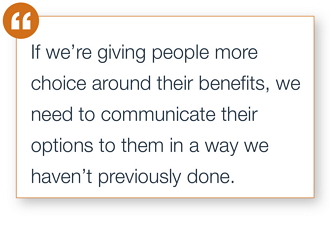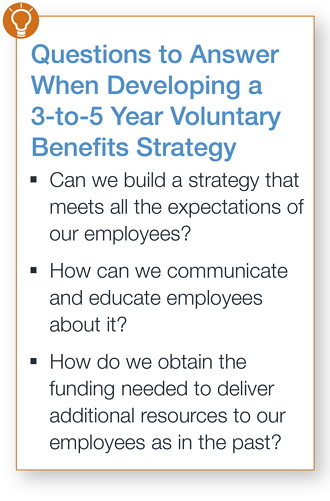Leverage voluntary benefits as a means to fund benefits education.
There’s much talk these days
about the negative intended and unintended consequences of health care
reform. But, like everything in life, there’s a silver lining here, too.
More employers than ever are
now using voluntary benefits to fill coverage gaps for their employees as they
move to high-deductible plans. But, what employers might not know about
offering voluntary benefits is that they can also be an efficient and
cost-effective way to communicate your total benefits package to employees.
Voluntary benefits plans are
naturally structured to include funding for a benefits communication and education
program that can often include a specialized enrollment education firm with enrollment
technology - available at no additional cost to the employer.
 “Introduced through the commissions built into
the voluntary or personalized benefits, an enrollment and education firm takes
a resource-intensive element of the job off the company’s HR staff and actually
creates a new line of communication with employees about their benefit options,”
said
Joe Torella, East Region President, Employee Benefits Division, HUB
International. “If we’re giving people more choice
around their benefits, we need to communicate their options to them in a way we
haven’t previously done. This more employee-centric approach is the impetus for
the shift from voluntary to personalized benefits.”
“Introduced through the commissions built into
the voluntary or personalized benefits, an enrollment and education firm takes
a resource-intensive element of the job off the company’s HR staff and actually
creates a new line of communication with employees about their benefit options,”
said
Joe Torella, East Region President, Employee Benefits Division, HUB
International. “If we’re giving people more choice
around their benefits, we need to communicate their options to them in a way we
haven’t previously done. This more employee-centric approach is the impetus for
the shift from voluntary to personalized benefits.”
Voluntary coverage can
include accident, critical illness, hospital indemnity and dependent health
coverage, legal, life, disability, travel and even pet insurance. The new line
of communications around voluntary benefits can be championed by both in-house
and third-party benefits specialists working in tandem and can include any
combination of print and online materials, one-on-one meetings and benefits seminars
for employees.
A Win-Win
We already established that
voluntary benefits help the employer, as product choices made by the employees
help fund initiatives that the employer has around enrollment, education or
communications. But, the employee also wins. For many employees, purchasing voluntary
benefits can be a new and rewarding experience. When the employer directs
investments to employee communications and education, employee engagement and
satisfaction increase.
“Some of the employees we
work with haven’t sat down with an HR representative on a one-on-one basis
since they were hired,” said Torella. “But, the fact is that employees are more
content when they choose their own voluntary or personalized benefits. When
they get the message: ‘My employer wants me to buy coverage that’s valuable to
me not just a catch-all plan they’ve chosen,’ they tend to choose a more
efficient array of benefits that better meet their needs and the needs of their
families.”
Additionally, most voluntary
benefits will be excluded from the Cadillac Tax, a non-deductible excise tax on
“Cadillac-style” healthcare benefits. For
all these reasons, more and more employers are leveraging voluntary benefits together
with a combination of traditional group medical and ancillary lines of coverage
as a means of filling the coverage gap left by new high-deductible plans.
Multi-Year Strategy
 Key to introducing voluntary
benefits to employees is creating a three- to five-year strategy around all
your benefits plans (see Viewing Employee Benefits from 50,000 Feet).
Key to introducing voluntary
benefits to employees is creating a three- to five-year strategy around all
your benefits plans (see Viewing Employee Benefits from 50,000 Feet).
“A good broker will build a
multi-year strategy around your organization’s KPIs and create a personalized benefits
palette for your employees that makes the most sense for them based on the life
stage and activities they are engaged in,” said Torella.
Torella further suggests
that employers should ask themselves the following questions when developing a three-
to five-year strategy that includes voluntary benefits:
- Can we build a strategy that meets all the expectations of our
employees?
- How can we communicate and educate employees about it?
- How do we obtain the funding needed to deliver additional resources
to our employees as in the past?
Overall, given the many
objectives of a multi-year strategy, improving employee satisfaction around all
benefits –voluntary, medical and ancillary coverage is critical. Torella
recommends starting with an employee survey. Find out what types of coverage are
important to your employee base and start there when it comes to determining
the best voluntary benefits to offer.
Contact your HUB Employee
Benefits specialist today to find out how your business can take advantage of voluntary
benefits and the enrollment education that comes along with them.